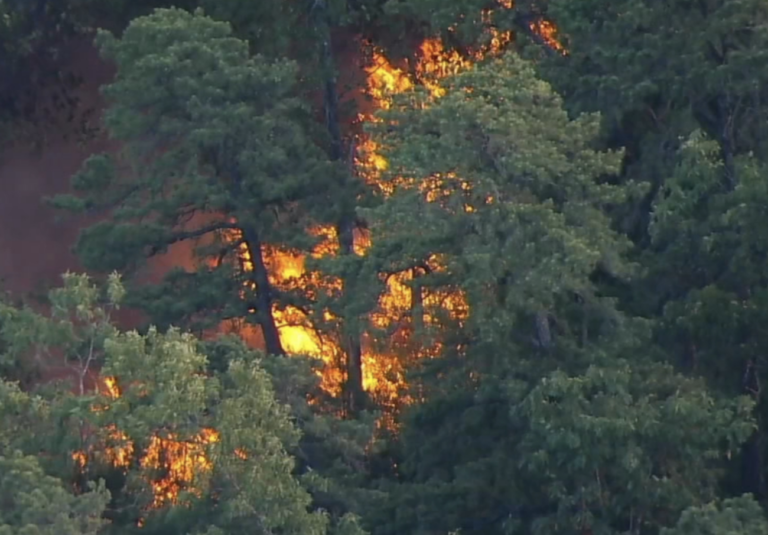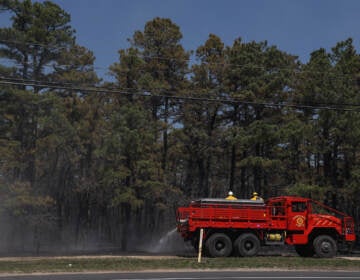Illegal campfire could have sparked Wharton State Forest fire, 13,500 acres consumed
Wharton State Forest fire destroys 13,500 acres, as investigators look to an illegal campfire as the potential spark.

Ruling out natural causes, officials are investigating an illegal campfire in a remote area of Wharton State Forest as the potential spark. (6abc)
A combination of odd weather fueled the blaze that destroyed up to 13,500 acres in South Jersey’s Wharton State Forest by Tuesday. The wildfire forced more than 50 campers to pack up and flee, threatened farmland, and sent unhealthy smoke toward shore towns.
Ruling out natural causes, officials are investigating an illegal campfire in a remote area of forest as the potential spark.
“This was not at a designated campsite where it would have been permitted in a camping area,” said Greg McLaughlin, chief of New Jersey’s State Forest Fire Service. “This was in a remote area of the forest that was essentially from what we can tell, a makeshift fire.”
McLaughlin says kayakers along the Mullica River reported the fire Sunday morning, and by the time crews arrived, it had spread to 50 acres. It was also spotted at the fire tower in Batsto Village.
A perfect combination of odd and unseasonable weather fueled the fast-spreading fire, including very low humidity, 23 mph winds with gusts of up to 30 mph, and “unprecedented” dew points.
“Because of extremely intense fire behavior…this fire was sending burning embers causing spot fires long distances,” McLaughlin said.
As a result, fire crews had to scatter to battle each new spot fire.
McLaughlin also said access to the site was hampered by narrow, twisting, sandy roads. Seventy-five firefighters remained battling the blaze as of Tuesday, along with a helicopter used to douse the flames with water from Atsion Lake.
He says he has a “confidence of 85%” that the fire will be contained to about 15,000 acres.
It’s unclear how climate change may have impacted the fire, but John Cecil, New Jersey assistant commissioner for state parks and historic sites, says in general the weather is now less predictable.
“We have a fire that we believe was started by a campfire that wasn’t appropriately constructed, wasn’t done in the right place,” said Cecil. “And yet it wasn’t necessarily during drought conditions. We’re seeing weather patterns that were very challenging with high winds that were beyond what we would typically expect and relative humidities that were much lower than we would expect. I think we need to be prepared for these variations in weather conditions that [climate change] is going to bring us.”
Across the country, forest fire seasons are lengthening and New Jersey is no exception.
McLaughlin said fire season in the state used to start in mid to late March and be over by the end of May.
“We’re seeing fires more often each year in February,” said McLaughlin. “And this particular fire behaved a lot like what would be a July fire if we were under a severe drought.”
No injuries or damage to buildings occurred, but officials say smoke could continue to impact air quality downwind in the Atlantic City area for the next couple of days, prompting health officials to recommend those who suffer from respiratory ailments like asthma to remain indoors.
The Wharton State Forest is a popular site for hiking, kayaking, canoeing, and camping. It encompasses 122,880 acres within the federal Pinelands National Reserve and lies about 30 miles east of Philadelphia. Hiking trails, as well as historic Batsto Village, are now closed. But officials say they hope to open the park for swimming within the next several days.
WHYY is your source for fact-based, in-depth journalism and information. As a nonprofit organization, we rely on financial support from readers like you. Please give today.





